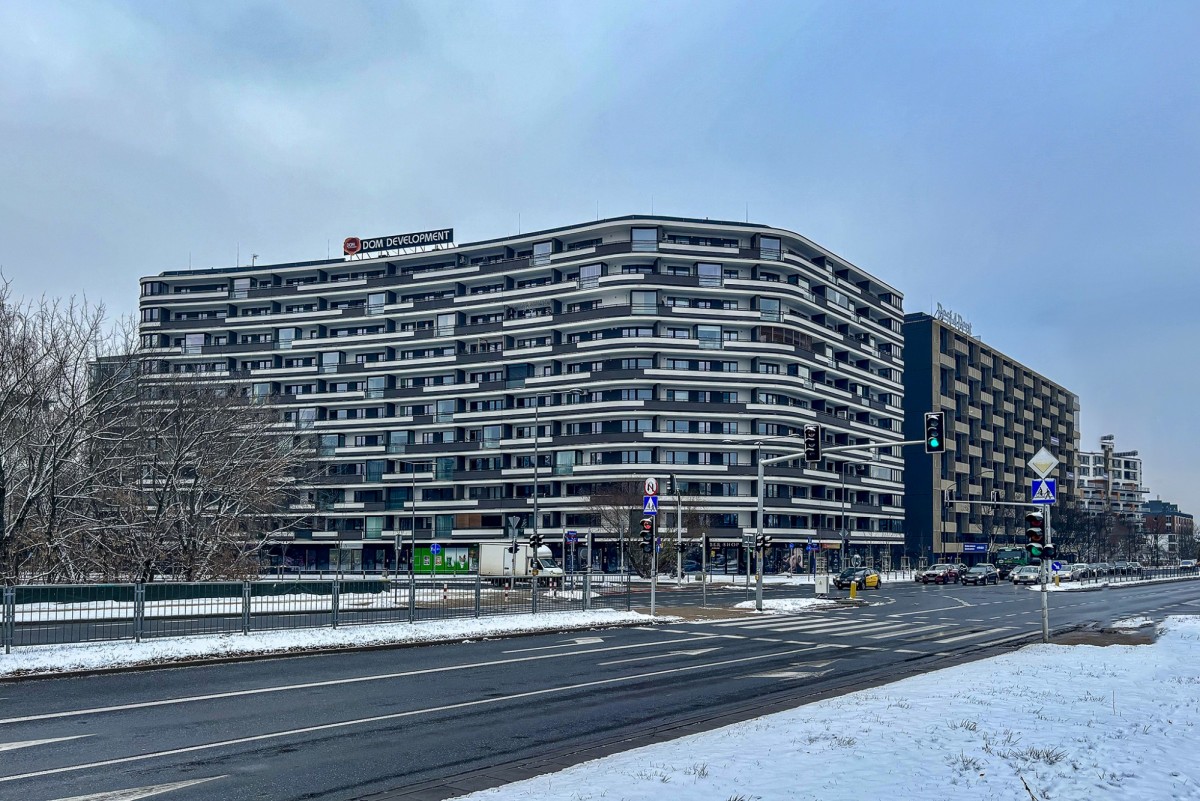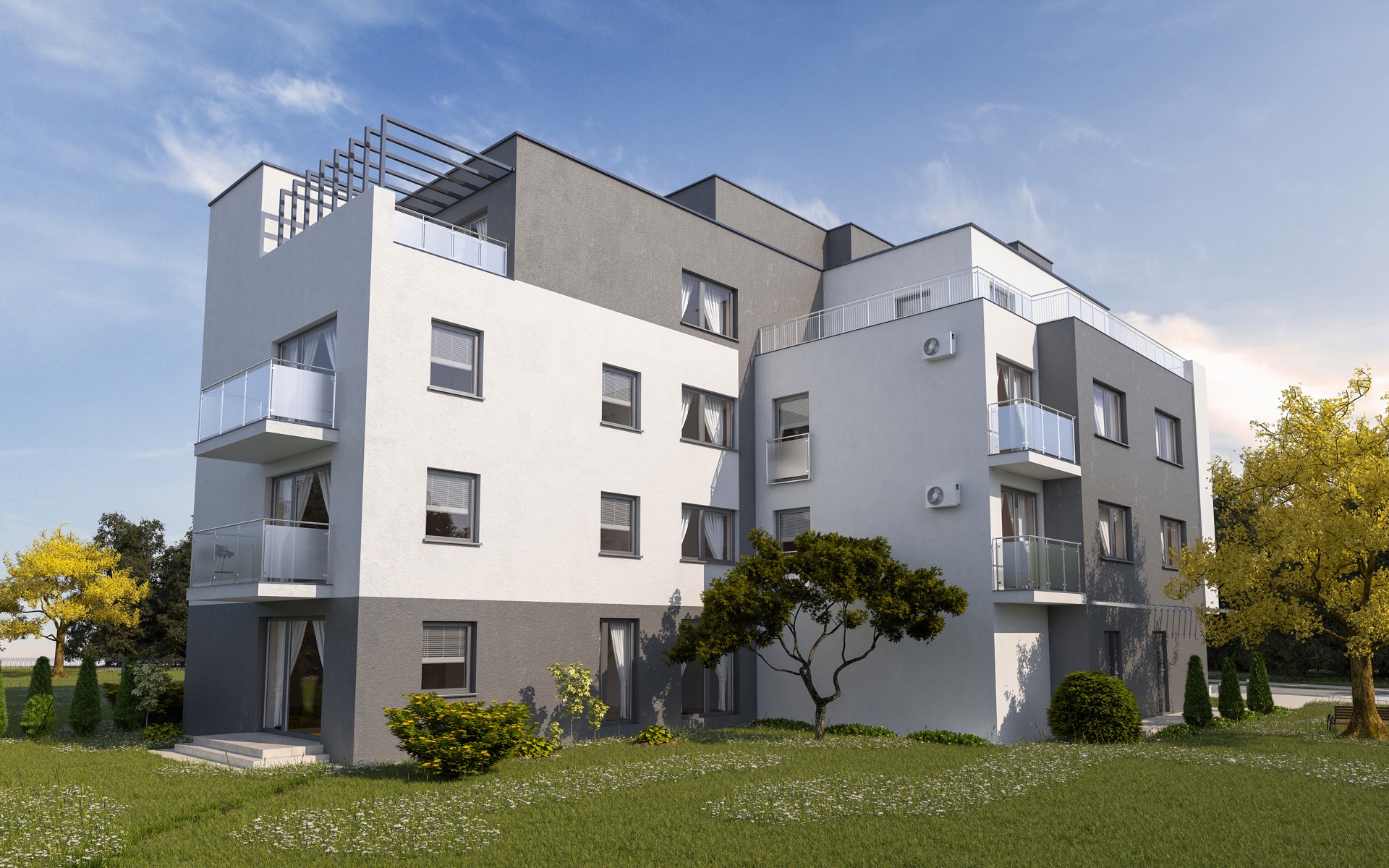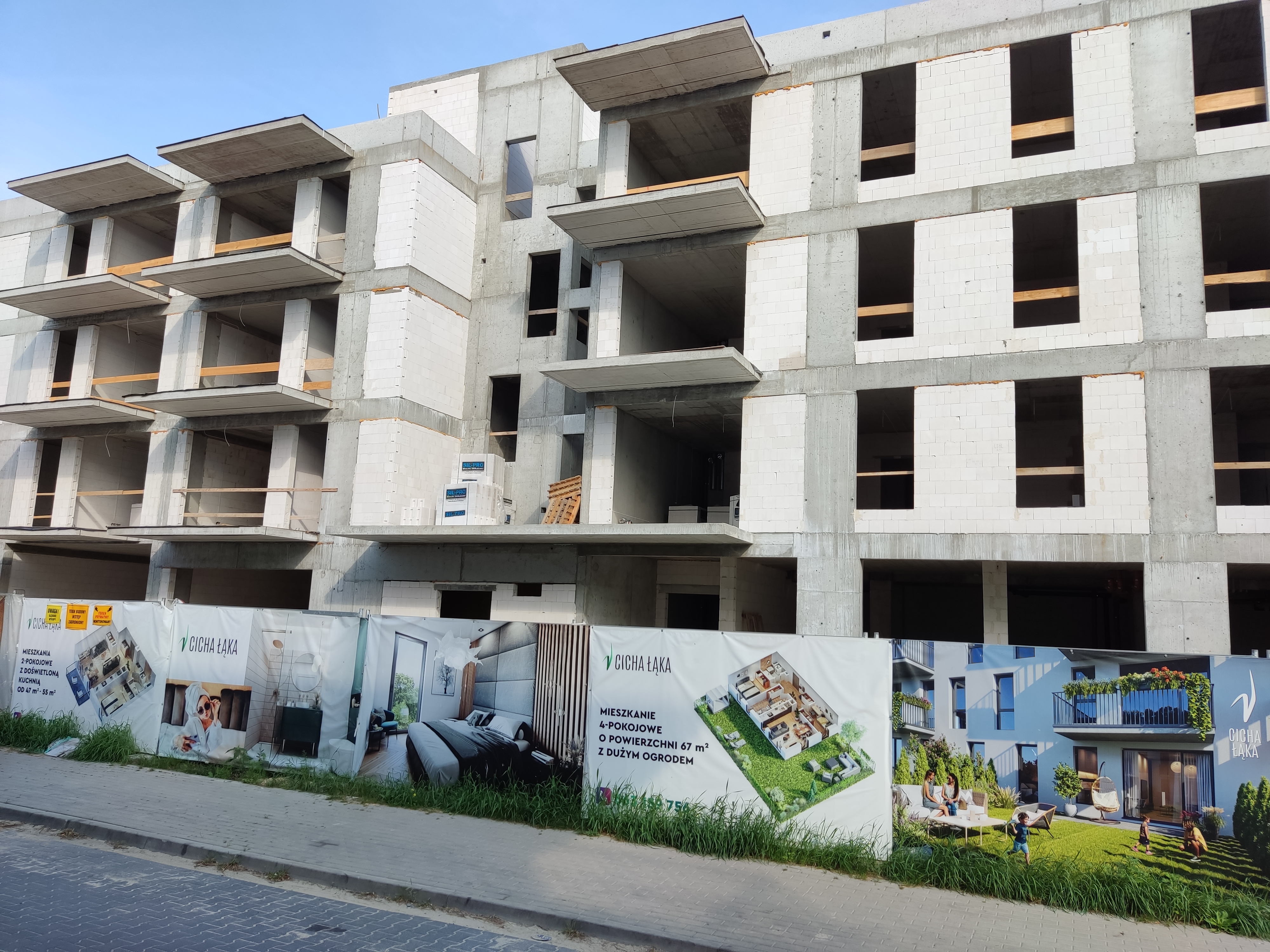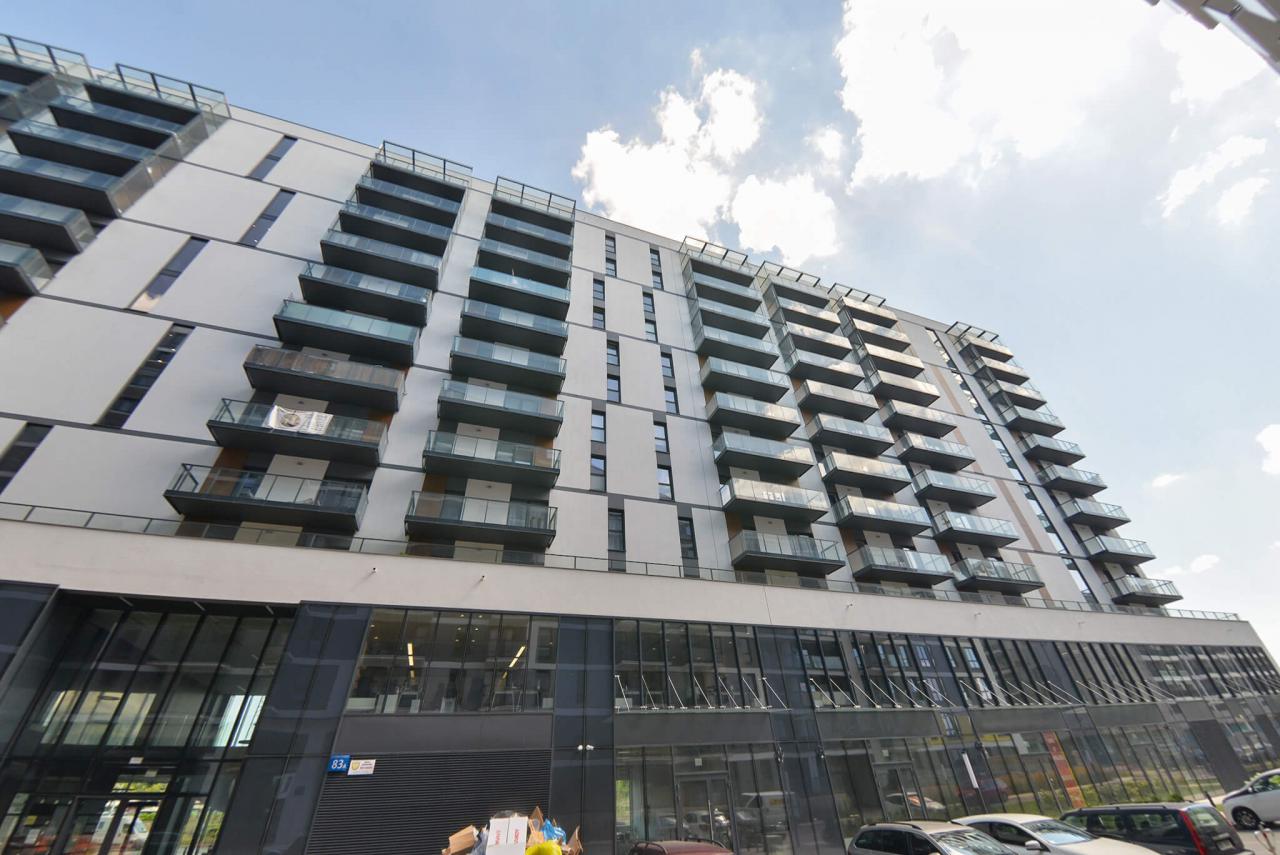Mokotow. Microdistrict Ksawerów

Location and administrative boundaries of the Ksawerów microdistrict
Ksawerów is a former village, now a microdistrict in the central-western part of the Mokotów district of Warsaw. From the east it borders with the residential areas of Sielce and Stegny, from the south - with Służewem, from the northwest and north - with the residential areas of Wyględów and Wierzbno, and from the west - with Służewcem. Ksawerów, according to the MSI city information system, also includes part of Służewca Przemysłowego. Its borders include the former Szopy Polskie and Niemieckie.
The boundaries of the Ksawerów microdistrict are determined as follows: through the Arkadia park (the area between the Skarpy Warszawskiej crown and Woronicza street) – st. Woronicza – Wołoska st. – al. Wilanowska to the height of the street. Dominikańskiej – crown of Skarpy Warszawskiej in accordance with the slope line, i.e. along the street. Bochenskiej and Potoki from the western side and st. Ikara from the east side, crossing the street. Idzikowskiego to Arkadia Park above the Pałacu Królikarnia Palace.
The eastern part of Ksawerowa serves residential and office functions. In the western part of the microdistrict there are office buildings, but here, too, new residential complexes are gradually being built, changing the appearance of this area.
The area has a fully developed infrastructure, many shops, service points, banks, clinics, etc. Convenient access to the city center is provided by public transport (numerous bus, tram lines and metro) and Chopin Airport.
From Ksawerowa you can easily reach the following interesting and useful places:
● Metro Wilanowska,
● University of Lazarskiego (Uczelnia Łazarskiego),
● Park Arkadia,
● Łazienki Królewskie Park and Palace.
Residential property in Ksawerowie
Ksawerów mainly consists of a residential area, most of which is occupied by multi-family residential buildings. In the north-eastern part of the neighborhood, east of Puławska Street and north of Czerniowiecka Street, there is a residential area consisting of single-family detached houses.
In 1968–1975, in the eastern part of Ksawerowa, in the area of Bukowińska, Cieszyńska and Czerniowiecka streets, the Skocznia residential area was built, consisting of seven apartment buildings. The area was built on the site of historical buildings of Szopy Niemieckie.
Between 1972 and 1977, the Domaniewska residential area was built in the western part of Ksawerowa, between Domaniewska Street, Independence Avenue, Wilanowska Avenue and Langego Street. It is divided into two parts by Domaniewska Street. The western part of the block was built in 1972–1974, and the eastern part in 1973–1977. Twenty large multi-apartment residential buildings of the panel system were built in Domaniewska. Here there is a group of houses made of the so-called large slab, reaching a length of up to 300 meters.
Business real estate in Ksawerowie
In eastern Ksawerowie, in the area of Wołoska Street, there are office buildings which, together with buildings located in the neighboring Służewiec area, form one of the largest complexes of office buildings in both Warsaw and Poland. It is informally known as Mordor, after the fictional location from the 1954–1955 fantasy novel The Lord of the Rings, written by J. R. R. Tolkien.
Among the public facilities located in the eastern part of Ksawerowa, the most important are the Police Headquarters, the Center for American Studies of the University of Warsaw and the Church of the Blessed Virgin Mary.
At 12 Wołoska Street is Westfield Mokotów, one of the largest shopping centers in the city.
In the western part of the neighborhood there are many office buildings and headquarters of famous companies, including the Polish Television building, the Zepter Business Center, Topaz or Curtis Plaza office buildings. Most office buildings are located on Domaniewskiej Street. Within the boundaries of Ksawerowa there is also the popular shopping center Galeria Mokotów.
Name of the microdistrict Ksawerów
The name Ksawerów comes from Count Ksawerego Pusłowskiego, who built his manor (13 Ksawerów Street) in the classicist style in 1840 and bought nearby Królikarnię in 1849. The manor house, demolished during the Second World War, rebuilt and expanded, now houses the headquarters of the Chief Conservator of Monuments.
Public spaces, museums and historical buildings in Ksawerowie
- Skwer Grupy AK “Granat” on Puławska street on the border with Woronicza, Broniwoja and Wielicka streets. It is named after the 10th Artillery Regiment, also known as the Granat Artillery Group, which was part of the Home Army during World War II. On the square there is a monument dedicated to the fallen soldiers of the unit. The square is located opposite the main gate of Królikarni. There are pleasant alleys and the park is densely planted with trees. During the summer season, every Sunday the Mokotów Breakfast Market takes place here.
- Królikarnia Palace, located in the north-eastern part of Ksawerow, on Puławska Street 113A. Built in 1786. It houses the Museum of Sculpture of Xavier Dunikowski.
The Yellow Tavern is located in the modern south-eastern borders of Ksawerow, at Wilanowska Avenue 204. Built in 1984. Currently, it houses the Museum of the Polish Peasant Movement.
Public transport in Ksawerowie
Transport in the Ksawerów neighborhood is very good. The Ksawerowa area is served by many tram and bus lines. Almost every part of this microdistrict has good transport links. The most important streets of Ksawerowa are served by trams - the tram tracks are located on the street. Wołoskiej, Woronicza and Puławskiej.
At the intersection of Wilanowskiej and Puławskiej streets there is a large bus stop – Wilanowska, once called Dworcem Południowym (South Railway Station). Buses depart from here to many cities on the southern borders of Warsaw. Buses pass through Ksawerów along the streets Woronicza, Domaniewską, aleją Wilanowską, Wołoską, Modzelewskiego, aleją Niepodległości and Puławską.
The Warsaw Metro line M1 also runs through the neighborhood with stations Wilanowska, located on Puławska Street, near the intersection with Wilanowskiem and Wierzbno Avenues, located at the intersection of Woronicza Street, Niepodległości Avenue and Naruszewicza Street.
You can move around by car without any problems.
Government and public buildings in Ksawerowie
Ksawerowie is home to the headquarters of several Polish government agencies. The National Police Headquarters is located at Puławska Street 148/150. At Ksawerów Street 13, in the Ksawerów complex, is the headquarters of the Department of Heritage Protection, which is a branch of the Ministry of Culture and National Heritage.
The Cuban Embassy is located in Ksawerowie, at Domaniewska Street 48.
In Ksawerowie, at Woronicza Street 17, there is a complex of buildings that house the headquarters of Telewizja Polska (Polish Television), the state television network of the public broadcaster of Poland and Polskiego Radia.
In Ksawerowie, at Domaniewska Street 20, there is the parish Roman Catholic Church of the Blessed Virgin Mary. It was built between 1982 and 1996.
Education, healthcare, culture and sports in Ksawerowie
Ksawerowie has both municipal and private kindergartens and primary schools. Niepodległości Alley is home to the Kazimierz Velikie Secondary School and the Center for American Studies at the University of Warsaw.
Primary health care clinics are located on Modzelewskiego and Domaniewskiej streets. Ksawerowie is also home to numerous private medical centers and specialist medical practices.
On Wilanowskiej Alley, in the żółtej karczmy building, there is the Museum of the History of the Polish People's Movement, which contains memorabilia and materials dating back to bygone times.
In Królikarnie there is a Museum of Sculpture im. Xawerego Dunikowskiego, which is a department of the National Museum in Warsaw.
Sports enthusiasts have good conditions for practicing various sports. There are plenty of places to run and bike paths. There are many fitness clubs in Ksawerowie, including the Zdrofit club in Galeria Mokotów. On Domaniewskiej Street there is Hangar 646, a sports and entertainment center that includes, among other things, trampolines. There are also other interesting offers of sports activities. Not far from the border of the district there is one of the best equipped swimming pools in Warsaw - Warsawianka, with a small water park.
Shopping in the Ksawerowa area can be done at many local shops and well-known discount stores. A popular shopping spot is Galeria Mokotów, located on the corner of Wołoskiej and Wilanowskiej. There are several hundred shops, service and catering enterprises, a large cinema and sports facilities.
History of Ksawerowa
In 1456, there was the first mention of the small settlement of Szopy, a farm-type settlement that originally belonged to the small noble family of Shopski. It was located in the area of Puławska Street, in the south-eastern part of modern Ksawerowa and the south-western part of modern Stegny.
From the first half of the 17th century, the settlement belonged to the Order of Discalced Carmelites.
In 1795, when this territory became part of the Kingdom of Prussia, Szopy was nationalized. At the end of the 17th century, the Prussian government placed German settlers in the western part of the settlement, west of Puławska Street. Thus, the village became known as Szopy Niemieckie (German Szopy). It was located in the area of modern Ksawerowa.
The area inhabited by the Polish population, in the eastern part of the village, east of Puławska Street, became known as Szopy Polskie (Polish Szopy). To the north of Szopy Polskie there were also Szopy Francuskie (French Szopy), inhabited by the French. Both of these settlements were located in the area of the modern Stegny microdistrict.
In the 1770s, the King of the Polish-Lithuanian Commonwealth Stanislaw August Poniatowski gave this plot of land to the brigadier general of the French army, Józef Jakubowski. On his lands, Jakubowski founded a small manor-type settlement, Wierzbno, near the village of Mokotów (now part of Starego Mokotowa).
In 1786, the Królikarnia palace, owned by Carlo Alessandro Tomatis, was built in the south of Wierzbno.
In 1794, during the Kosciuszko Uprising, Tadeusz Kosciuszko, the leader of the rebel forces, lived in the Królikarnia Palace.
In 1816, Tomatis sold the Królikarnia palace to the Radziwiłł family.
In 1840, the nobleman Ksaver Pusłowski built his residence in the south of Wierzbno, now known as Ksawerów, which is located at Ksawerów Street 13. A road was built next to it, forming the current Ksawerów Street.
In 1849, Królikarnia Palace was bought by Ksaver Puslovsky. Over time, the area developed into a separate settlement, named after its founder Ksawery and later Ksawerów.
Between 1852 and 1853, the Yellow Tavern was built within the present-day southeastern borders of Ksawerowa, located at present-day Wilanowski Avenue 204. It was originally part of the neighboring village of Wilanowska. Until the beginning of the 20th century, a tavern operated here. When it went bankrupt, the building was used for a variety of purposes, including as a dog house and a residence.
In 1966, the Yellow Tavern building was nationalized to protect it as a cultural property. In 1984, the Museum of the Polish Peasant Movement was opened in the building of the Yellow Tavern.
On April 8, 1916, Ksawerów, together with the surrounding territory, was incorporated into the city of Warsaw.
In 1937, the Warszawa Szopy railway station opened in Szopah Niemieckih, which later became known as Warszawa Południowa. It was part of the railway line between the stations Mokotów and Nowe Miasto nad Pilicą. The station operated until 1969. Its building was dismantled in 2000.
In 1939, during the German siege of Warsaw during World War II, the Królikarnia Palace was used by the Polish armed forces as a defensive position against the advancing forces of the German Wehrmacht. The building was destroyed during the fighting.
In 1944, during the Warsaw Uprising, Home Army divisions were stationed in the palace gardens. The gardens became the site of heavy fighting between Polish and German soldiers. In October 1944, the palace, along with the surrounding buildings, was burned by the German occupation forces.
In 1945, the Królikarnia Palace became the property of the city of Warsaw and was confiscated from the Kraszynski family, which previously owned it. The building was rebuilt in 1964, and in 1965 the Museum of Sculpture of Ksawery Dunikowski was opened, which contains sculptures from the collection of the National Museum in Warsaw.
In 1969, the Radio and Television Center was opened at 17 Woronicza Street, a complex of buildings that to this day serves as the headquarters of Telewizja Polska (Polish Television), Poland's state-owned public broadcasting network. The current headquarters building in the complex was completed in 2007.
In the 1970s, the Domaniewska and Skocznia neighborhoods, consisting of multi-apartment residential buildings, were developed within the boundaries of Ksawerowa.
In the 1990s, office buildings were built in the eastern part of Ksawerowa, in the area of Wołoska Street. Together with the office district in the neighboring Służewiec district, they form a complex of office buildings informally known as Mordor, which until 2019 was the largest of its kind in both Warsaw and Poland.
On April 7, 1995, two stations of the M1 line of the Warsaw Metro were opened in the microdistrict.
On October 4, 1996, the Mokotów district was divided into urban information system districts, one of which was the Ksawerów district.
In 2000, Westfield Mokotów (originally Galeria Mokotów), one of the city's largest shopping centers, was opened at 12 Wołoska Street.
Sights of the Ksawerów microdistrict
The main attraction and most important building of Xaverov is the Królikarnia. Królikarnia is a palace in the classicist style, located on the street. Puławskiej 113a in Warsaw, on the Vistula escarpment. Location of the Museum of Sculpture named after. Xawerego Dunikowskiego. The current name of the estate comes from Saxon times, when there was a zoo where rabbits were bred for the court of Augustus II. More precisely, it comes from the topographical name of the cape of the Warsaw Escarpment, then called Kaninchenberg or “Caningenberg”, which loosely translated into Polish means “Rabbit Mountain”.
In 1731–1732, the royal pavilion of Augustus II was built on top of Króliczej Góry, in the central part of the former rabbit farm. The representative two-story pavilion, which served as a luxurious observation deck, was the main point of the architectural design of the so-called Wielkiego Kampamentu, organized by Augustus II in the summer of 1732 on the meadows of Czerniakowa and the northern foreground of the residence in Wilanowie. The field residence of Augustus II on the top of Króliczej Góry did not last long in its luxurious form. Already around 1735, the garden, the pavilions of the maids of honor and the royal pavilion itself disappeared from its territory.
During the reign of Stanisław August Poniatowski, the Królikarni site originally housed a brewery, a brick factory, a hotel, a mill and a barn, as well as a kitchen building located on the slope of a gorge, inspired by the Roman tomb of Cecilia Metella. The building was built in 1782–1786. In 1794, during the Kosciuszko Uprising, Tadeusz Kosciuszko lived in the palace. Subsequently, the owners changed several times.
The palace was again destroyed during the defense of Warsaw in September 1939. In 1944, Warsaw rebels fought the Germans in the garden, during which the kitchen burned down and the terrace with a grotto and trees were destroyed.
In 1945, the property became the property of the city. The palace was rebuilt in 1964. Of the palace interiors, only the Round Hall was restored to its original form. After the reconstruction was completed, the palace housed the Museum of Sculpture. Xawerego Dunikowskiego, opened in 1965. It hosts exhibitions presenting Polish and foreign contemporary artists in individual and group shows.
Around Królikarni there is a park of the same name. Surrounded by trees and shrubs, the Sculpture Park displays selected works from the rich collection of the National Museum in Warsaw. The park hosts exhibitions, festivals, film screenings and concerts, and musicians of the National Philharmonic perform here. Królikarnia is a great place for romantic walks, especially if you want to be away from busy streets or tourist parks.
- Komenda Główna Policji (KGP) - Main Police Department (KGP). The building of the Main Police Department is located on the street. Puławskiej 148/150 in Warsaw. The building was built in the style of socialist realism in 1955. Previously, the Ministry of Internal Affairs was located here. The layout is H-shaped, which corresponds to modern palace architecture. The entrance portico is decorated with lotus columns.
- Galeria Mokotów (from 2022 Westfield Mokotów) is a shopping and entertainment center located in the Mokotów district of Warsaw, on the street. Wołoskiej, 12. The center was built on the site of the former Tewa semiconductor plant. It was put into operation in September 2000. As a result of two expansions (2002 and 2006), its commercial area increased to 62.5 thousand square meters. In 2013, another expansion of the center was completed, and in 2020 the entrance area and rotunda were rebuilt.
In 2020, three levels included 210 stores and service points, 13 restaurants and bars and the 11-screen Cinema City. There is an apiary on the roof of the building. On September 29, 2022, the center changed its name from Galeria Mokotów to Westfield Mokotów.
- Kościół parafialny of the parish of the Blessed Virgin Mary, Mother of the Church in Warsaw - a Roman Catholic parish belonging to the Mokotów Deanery of the Warsaw Archdiocese, the Warsaw Metropolitanate of the Catholic Church in Warsaw. Governed by archdiocesan priests. The parish was founded in 1981. The parish church was built in the 1980s.
- Muzeum Historii Polskiego Ruchu Ludowego (Museum of the History of the Polish People's Movement) is a museum located in the Mokotów district of Warsaw at al. Wilanowska 204, in the Żółta Karczma building. It contains souvenirs and materials related to the history of Polish peasants and the Polish people's movement. The institution was founded in 1984. His residence is a villa called Żółtą Karczmą, built in 1852–1853. The museum contains exhibits related to the popular movement, including the activities of peasant parties and rural cultural and educational associations. Among the most interesting exhibits are documents related to the activities of the Polish People's Party in exile, paintings and sculptures by rural non-professional artists. Sculptures depicting activists of the popular movement are exhibited in the garden surrounding the museum.
Blog


Development of the housing market in Warsaw and the Masovian Voivodeship – April 2025
Development of the housing market in Warsaw and the Masovian Voivodeship – April 2025

The Real Estate Market in Poland in 2024
The Real Estate Market in Poland in 2024





